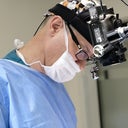Hello, I’m 30F, and I’ve been doing a lot of research on rhinoplasty. I truly don’t mind my dorsal hump, but I do feel like my nose is extremely long for my face. Is it possible to have my nose shaved without breaking the bones or to just have my tip shortened a bit. If not, what would be the best option? Thanks again!
Answers (16)
From board-certified doctors and trusted medical professionals
Dr. Steven M. Denenberg, MD

Dr. Steven M. Denenberg, MD
Board Certified Facial Plastic Surgeon
Answer
Dr. Oakley Smith, MD, FRCSC

Dr. Oakley Smith, MD, FRCSC
Certified Facial Plastic Surgeon
Answer
Dr. Gary M. Horndeski, MD

Dr. Gary M. Horndeski, MD
Board Certified Plastic Surgeon
Answer
Dr. Paul E. Chasan, MD, FACS

Dr. Paul E. Chasan, MD, FACS
Board Certified Plastic Surgeon
Answer
Dr. Ronald J. Edelson, MD

Dr. Ronald J. Edelson, MD
Board Certified Plastic Surgeon
Answer
Dr. Ruslan Zhuravsky, DO

Dr. Ruslan Zhuravsky, DO
Facial Plastic Surgeon, Board Certified in Otolaryngology – Head and Neck Surgery
Answer
Dr. Jeffrey H. Spiegel, MD

Dr. Jeffrey H. Spiegel, MD
Board Certified Facial Plastic Surgeon, Board Certified in Otolaryngology – Head and Neck Surgery
Answer
More Rhinoplasty Questions
See all Rhinoplasty Q&AWE SEND PRETTY
EMAILS
What’s trending? Who’s turning heads? Which TikTok myths need busting? We’ve got you. No fluff, no gatekeeping—just real talk. Get our free, unfiltered newsletter.


